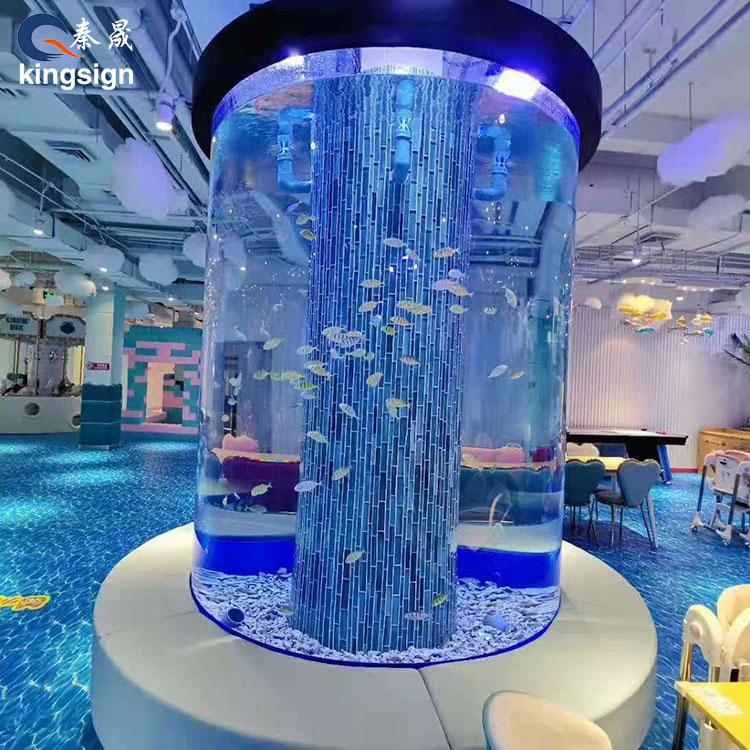Crystal Clear Waters: Maintaining Water Quality and Clarity in Your Aquarium Cylinder
2024-03-28
Achieving and maintaining optimal water quality and clarity is essential for the health and vitality of aquatic life in an aquarium cylinder. With its unique shape and design, proper maintenance is key to ensuring a thriving aquatic ecosystem within the confines of the cylindrical tank. In this blog post, we'll explore effective strategies and best practices for maintaining water quality and clarity in your aquarium cylinder, allowing you to create a pristine and captivating underwater environment.
1. Regular Water Testing:
Regular water testing is the cornerstone of effective water quality management in an aquarium cylinder. Test water parameters such as pH, ammonia, nitrite, nitrate, and carbonate hardness (KH) using reliable test kits. Monitoring these parameters regularly allows you to identify any fluctuations or imbalances and take corrective action promptly.
2. Consistent Water Changes:
Performing regular water changes is crucial for removing accumulated waste, excess nutrients, and other impurities from the aquarium cylinder. Aim to change approximately 10-20% of the water volume every 1-2 weeks, depending on the stocking density and bioload of the tank. Use a siphon or gravel vacuum to remove debris and detritus from the substrate during water changes.
3. Proper Filtration:
Selecting and maintaining an appropriate filtration system is essential for maintaining water quality in an aquarium cylinder. Choose a filtration system with adequate mechanical, biological, and chemical filtration capabilities to effectively remove particulate matter, ammonia, nitrite, and nitrate from the water. Regularly clean and replace filter media as needed to ensure optimal filtration efficiency.
4. Adequate Circulation and Aeration:
Proper water circulation and aeration are essential for maintaining oxygen levels and promoting gas exchange in an aquarium cylinder. Position the filtration outlet and airstones strategically to create gentle water movement and surface agitation. This helps prevent the formation of stagnant areas and ensures uniform distribution of oxygen throughout the tank.
5. Gravel Vacuuming and Substrate Maintenance:
Regular gravel vacuuming and substrate maintenance help prevent the buildup of organic waste and debris in the aquarium cylinder. Use a gravel vacuum to remove detritus and waste from the substrate during water changes, paying particular attention to areas with poor water circulation. Avoid overfeeding and excessive waste accumulation to minimize substrate contamination.
6. Algae Control:
Algae growth can detract from the clarity and aesthetics of an aquarium cylinder. To control algae growth, maintain appropriate lighting levels, avoid overfeeding, and perform regular water changes. Additionally, consider introducing algae-eating organisms such as snails, shrimp, or certain fish species to help keep algae populations in check.
7. Avoid Overstocking:
Overstocking can lead to increased waste production and nutrient buildup in the aquarium cylinder, compromising water quality and clarity. Follow recommended stocking guidelines based on the size of your tank and the specific needs of the aquatic inhabitants. Avoid overcrowding to maintain a healthy and balanced ecosystem.
Conclusion:
In conclusion, maintaining water quality and clarity in an aquarium cylinder requires diligence, attention to detail, and regular maintenance. By implementing effective strategies such as regular water testing, consistent water changes, proper filtration, and substrate maintenance, you can create and sustain a pristine aquatic environment that promotes the health and well-being of your aquatic companions. With proper care and maintenance, your aquarium cylinder will shine with crystal-clear waters, allowing you to enjoy the beauty and tranquility of your underwater oasis.



